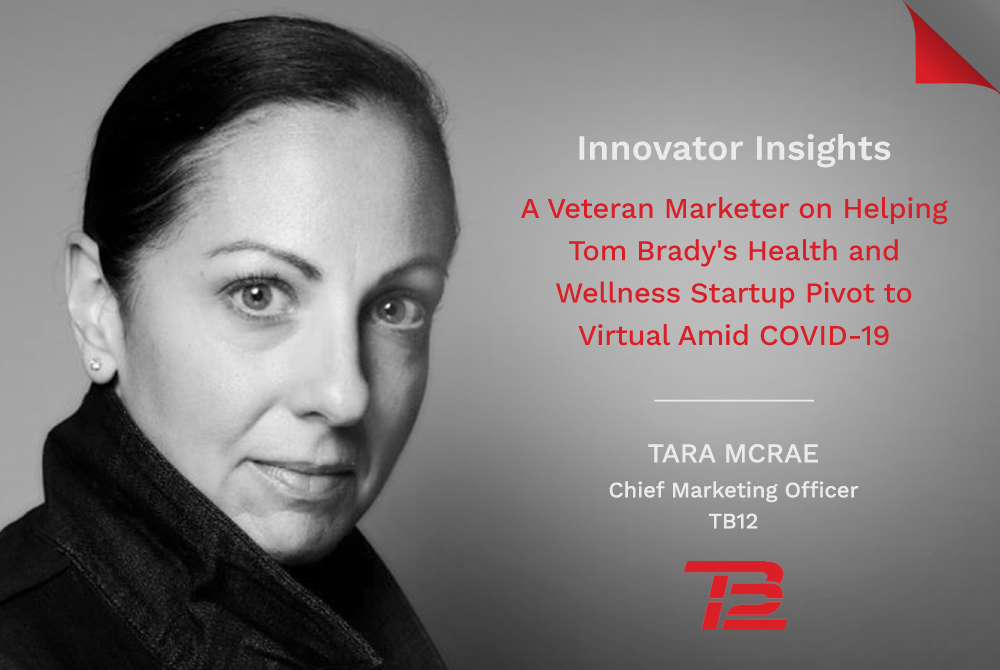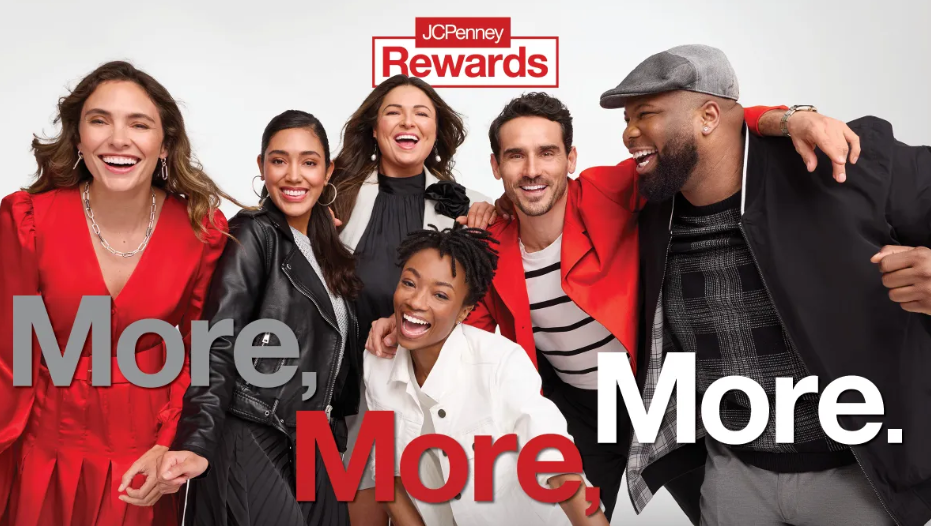Tara McRae, chief marketing officer of TB12, had only been in her role for a month when COVID-19 caused nationwide shutdowns in March. As the company’s first CMO, she was tasked with growing awareness and education around the Massachusetts-based lifestyle, health and wellness company, which was co-founded in 2013 by former New England Patriots (and current Tampa Bay Buccaneers) quarterback Tom Brady and his longtime trainer Alex Guerrero.
But once sheltering-in-place orders took hold, TB12 had to pivot not just its marketing, but its operations as well. TB12 originally launched as a performance and recovery center near the Patriots’ home base, Gillette Stadium, in Foxborough, Mass., with a focus on providing clients with what the brand calls “body coaches” to nurse injuries, develop flexibility and “pliability,” and improve overall health.
While TB12 has been able to sustain its ecommerce business — which sells supplements, nutrition products, apparel and “pliability” and performance equipment like resistance bands — throughout shutdown, the in-person sessions required a pivot to virtual body coaching so that clients could keep getting the care they needed. (In a show of support for those battling the virus on the frontlines, TB12 began offering free performance and recovery sessions for first responders and healthcare workers.) Beyond the performance and recovery sessions, it also launched virtual workshops, including running workshops and a golf series.
Though McRae was new to her role, she worked with her new colleagues to pivot its marketing and external messaging to what she calls a “content-first” approach (more on that in the Q&A), providing content and information on all things health and sports — all of which help her achieve her goal of driving awareness and education.
TB12, while still relatively small, has grown significantly since its early days as a single recovery and performance location. To expand, it brought on corporate employees in late 2014 and early 2015, and in 2016 it launched its ecommerce business. (Aside from its own ecommerce site, the company also has partnerships with companies like Whole Foods, which sells some of TB12’s products.) TB12 expanded further in 2019 with another performance and recovery center on Boylston Street in Boston that also houses a retail store selling TB12 products, as well as a smoothie bar. The company plans to expand its physical footprint beyond Massachusetts, including to Brady’s new homebase in Tampa.
“TB12 has gone from being a recovery center to being a global health and wellness company,” says McRae. The move is a change for McRae, who’s spent much of her career climbing the marketing ladder at bigger, more established companies like Puma and Clark’s shoes. Before joining TB12, she was CMO at Clark’s, splitting her time between the U.S. and England.
“It couldn’t be more polar opposite from where I was,” says McRae of her new role. “Clark’s is almost 200 years old, with an insane amount of legacies and systems and processes and heritage and all those fun things that go along with an established company. And to move to a startup like this was so exciting, because I’m able to help implement some of the things I picked up at those established companies.”
Since racial-injustice protests began in late May after the death of George Floyd, the brand has made commitments to several community-based and local youth programs for kids affected by poverty and lack of infrastructure initiatives, particularly in the greater Boston Area.
Brand Innovators caught up with McRae from her home in Boston to discuss the transition from working at big organizations to a startup, how the brand has adapted in COVID, and more. The interview has been edited for length and clarity.
You’ve worked at several brand side companies including puma and then Clarks, where you worked your way up to CMO. What made you want to take the leap to TB12? Was it the category, or was it the opportunity to work in more of a small startup type company?
I was at Bose, Puma and Clark’s, and all three are major multi billion dollar global brands that had been around for many, many years. So jumping into a brand that has only been around for a few years and was in startup mode was definitely attractive to me, because I had not done that in my career.
But the number one reason I went to TB12 is health and wellness. It’s near and dear to my heart, having grown up as an athlete and still loving athletics. My wife is a fitness and yoga instructor. My kids are both extremely active in multiple sports, whether that’s dance or soccer or la crosse. It’s just who we are.
So an opportunity to be a part of an early-stage organization in the health and wellness market, and given what TOm and Alex have done, I absolutely couldn’t pass up.
How involved is Tom Brady in the day-to-day at TB12?
Both Tom and Alex are definitely involved in the business. It varies on their involvement in key initiatives and products, but on a day-to-day basis they’re involved. They’re the foundation, they have a body coach-client relationship and it’s what we mirror daily in our brand.
It’s only been about 5 months, but do you have any learning curves you are going through going to TB12 from older, more established brands?
I thought it would be harder when I got here, because with every brand I’ve been at, there’s so much rich history to excavate from to develop the brand strategy, and coming here you’d think there wouldn’t be that much history because it’s only a few years old.
But when I met with Tom and Alex for the first time, I asked them why they started the company and where they see it going. They said the goal was to help people, and that’s still the goal. Coming in and fine-tuning and pulling the brand strategy and direction was really exciting and wasn’t as challenging as I thought it’d be, because there were so many amazing pieces already there.
Now I’m focused on planning the marketing and communications plan to grow the brand. Five months is not a long time, but I’ve realized that can also be a really long time, because there’s not the layers and red tape that causes things to take so much longer at larger organizations.
You’re the first CMO at TB12. Is the marketing department structured differently than other ones you’ve worked in, or are you building it out?
The majority of people we have now were there when I got here, but I’ve brought on a couple people. Our team is about 10 people deep, and that includes marketing, content, creative and PR. Coming from companies with hundreds of people in the marketing orgs is very different. We may not be structured like a larger organization, but we do have people working in all the core functions. Our team is really hungry and passionate about what we’re trying to achieve, and a lot of them are former athletes — they’re just so embedded in the health and wellness space.
My role is really pulling the team together and having a clear marketing strategy and plan. They were executing the day-to-day phenomenally, but there needed to be a CMO for the larger, strategic thinking and direction and then bringing the team together to drive towards that.
We have a mixture of people now. We are heavy on digital marketing, performance marketing and social media. We also have people focused on the marketing of our performance and recovery centers, as well as marketing with some of our wholesale partners. We also have an insane amount of editorial, so if you look at what we call the TB12 Playbook, which is our blog and content hub with daily tips and information, you’ll see a lot of additional work we do in that space.
How is your marketing and budget changing in light of covid? And can you elaborate on your editorial and content pivots?
Along with the virtual pivots we made with the business, we also pivoted to a new content approach, which is “content first.” It’s about really delivering what people wanted in health, nutrition, at-home workouts and how to build a gym at home, among other things. We Pivoted really fast into that space. We started offering weekly webinars free of charge, and every week is themed differently. We had our TB12 nutritionists do one, for example, showing people how to handle shopping when you can’t get everything at the store during COVID.
The consumers are responding, and are being vocal on additional subjects they want. We just pivoted to delivering content first to the consumer. And from a brand standpoint, they’ve been really responsive. The amount of new people we’ve added to our database and are coming to us for nutrition, supplementation and hydration products, as well as our at-home kits has been fantastic.

Let’s talk about your marketing strategy a bit. How do you plan to get the TB12 brand a bigger profile?
It’s a lot of education and awareness. If someone is in the ecosystem at the TB12 brand, they are the best advocates we’ll ever have. The passion of our clients and consumers is unbelievable. I’ve never seen it at any other brand that I’ve been at. So the goal is to be able to harness our clients to be able to become the advocates of our brand and really build the awareness and education of what TB12 is. Sometimes people think it’s an apparel company, so it’s clear that we have to continue to build that education and awareness around what we offer, because there’s only so many people that are going to be able to live in a location that offers access to the coaches for treatment.
That’s where planning and executing virtual products and services has been key. Amid coronavirus, we accelerated all of our virtual plans, which were on the books for 2021. We did it in a matter of weeks, so now we’re able to virtually to work with clients all over the country.
So the overall focus is really utilizing our clients because there’s nobody better to talk about the brand experience or build education and awareness. Which is why I’m excited that Tom brings awareness because he’s so passionate about it. Him relocating to Florida is another opportunity to expand the brand to new potential clients and bring the brand presence to life in Florida.
What’s the biggest priority in terms of media mix?
Digital is huge for us. We sit in the middle of where a big brand has the full 360 marketing mix and where a DTC startup with heavy reliance on those DTC channels. Tom brings a lot of people to the brand as well.
The most we’ve gotten into above the line would be out of home. When we opened the flagship center on Boylston Street in Boston, we had an out-of-home buy in the Boston area.
But in general, when we approach media planning we ask, what’s the initiative and what’s the objective of the initiative? That’s how you build the marketing mix. I wouldn’t say we’re just going to stick to DTC channels or we’re just going to only do above the line — It really depends on what the initiatives are.
Who would you say your target customer is, aside from someone interested in health and wellness?
In general, the psychographic standpoint and mindset of the person we look to reach is one who is never going to give up and will live an active lifestyle no matter what. As far as age ranges go, it is a very broad range of people. We have young high school and collegiate athletes, we have fitness fanatics of the late 20s through 40s, and we have older people who suffer from chronic pain and want to be active.
Are people buying less TB 12 products, or are they turning more to the home exercise products the brand sells online, because of COVID-19?
The hurdle for us is from a virtual standpoint. We’ve had a lot of new people coming in virtually from all over the country. Now we have this amazing network of people from all over, but they’re not near a recovery center. So the question is how are we going to evolve our virtual offering so that they can still use the brand?




